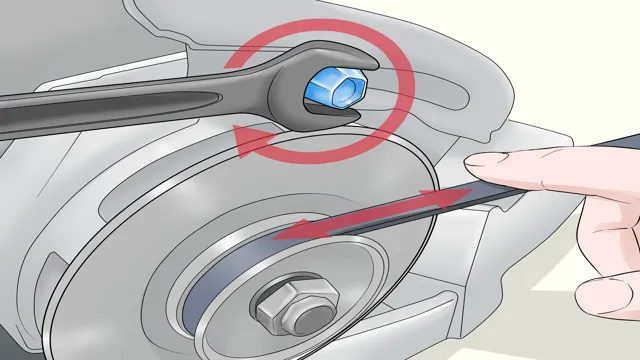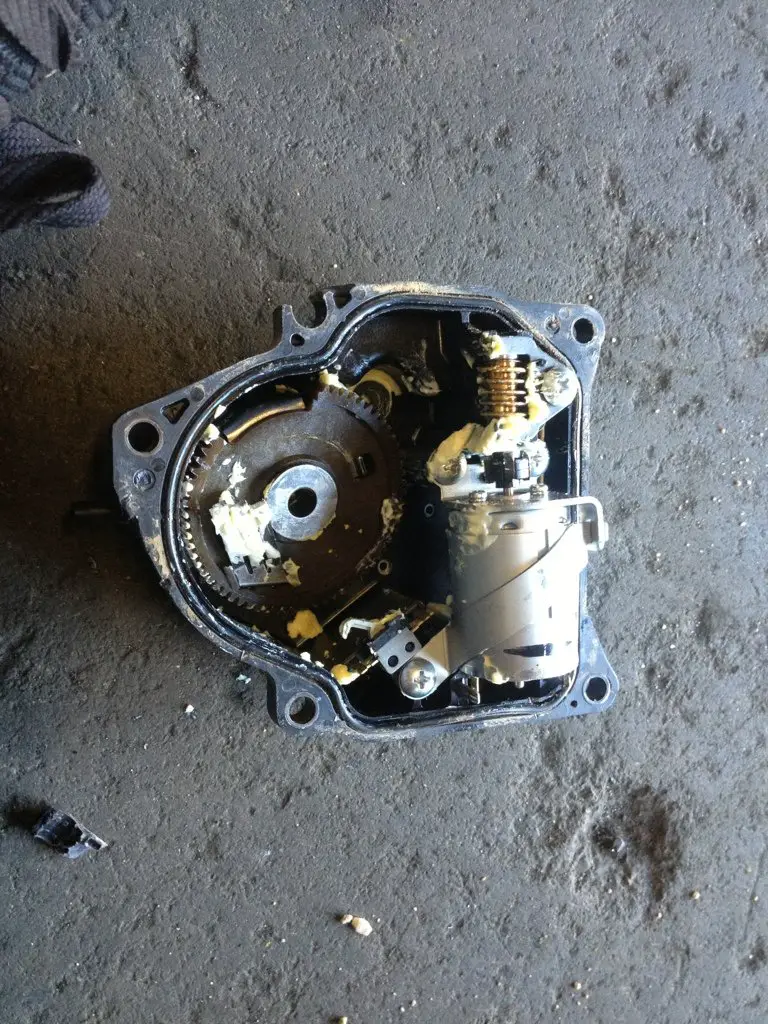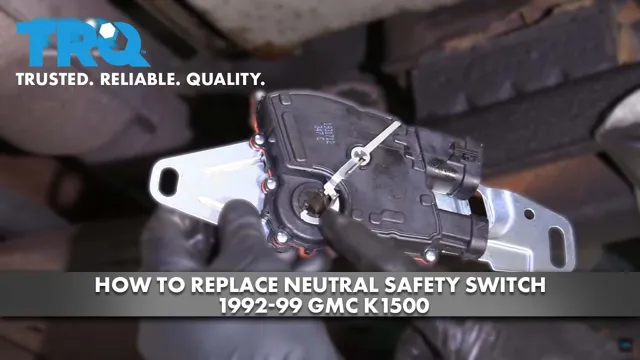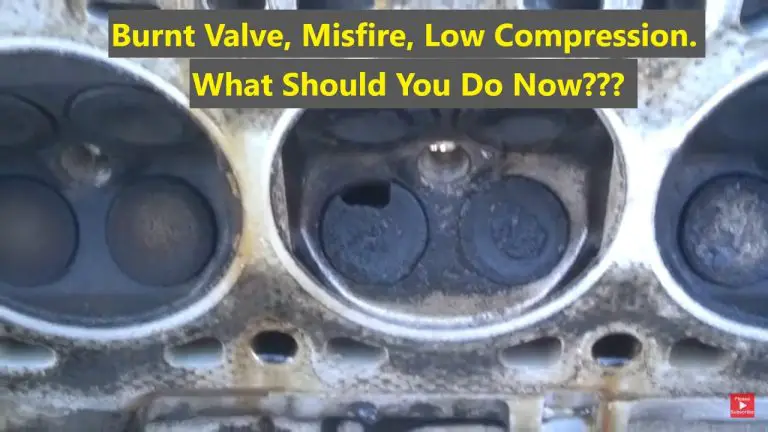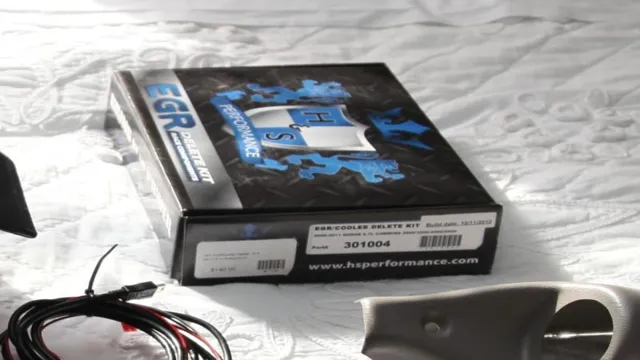5 Easy Steps: How to Add Coolant After Changing Your Water Pump
As a car owner, taking care of your vehicle means replacing damaged parts and ensuring everything runs smoothly. One of the essential components of your car is the water pump, responsible for circulating coolant through the engine to maintain its optimal temperature. However, after replacing your water pump, you may wonder if adding coolant is necessary.
Well, the answer is yes, and in this article, we’ll explain why adding coolant after a water pump replacement is crucial for your car’s health. So buckle up and let’s dive in!
Prepare for Adding Coolant
So you’re done changing your water pump and it’s time to add coolant. First off, make sure your engine is cold before you begin. Pop open the hood and locate the coolant reservoir.
It’s usually a translucent plastic tank with a cap. Remove the cap and check the coolant level. If it’s low, you’ll need to add more.
You can use either premixed coolant or concentrate that you’ll need to mix with distilled water. If you’re using concentrate, follow the manufacturer’s instructions for the right ratio. Slowly pour the coolant into the reservoir until it reaches the “full” line.
Securely replace the cap back onto the reservoir and clean up any spills. Now that the coolant level is topped up, start the engine and let it idle for a few minutes. This will help circulate the coolant through the engine and make sure everything is working smoothly.
Double check the coolant level one more time after the engine cools down and add more as necessary. And there you have it! Your water pump has been replaced and the engine is properly cooled with fresh coolant.
Check Your Owner’s Manual
When it comes to adding coolant to your vehicle, it’s best to check the owner’s manual for specific instructions. Different makes and models may have different requirements, and it’s important to follow the manufacturer’s recommendations to ensure proper engine function. Before adding coolant, make sure the engine is completely cooled down to avoid burns or injuries.
Typically, the coolant reservoir is located near the radiator and can be easily identified by its cap and markings. Once located, remove the cap and check the coolant level. If it’s low, add the recommended type of coolant until it reaches the maximum level.
Avoid overfilling, as this can cause damage to the engine. Regularly checking and adding coolant can help prevent overheating and keep your vehicle running smoothly.
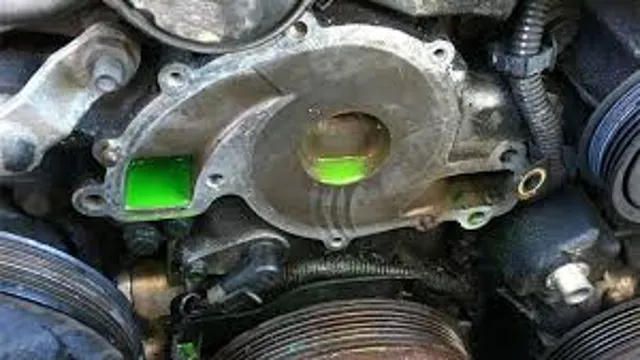
Allow Engine to Cool
One of the most important things to remember when adding coolant to your car’s engine is to allow the engine to cool down first. This may seem like an obvious step, but it is often overlooked in the eagerness to get the job done quickly. Trying to add coolant to a hot engine can be dangerous, as the pressure in the cooling system can cause the coolant to spray out violently.
Additionally, the heat from the engine can make it difficult to handle any parts or components, increasing the risk of burns and other injuries. To prevent any accidents or mishaps, it is best to wait until the engine has had ample time to cool off before attempting to add coolant. A good rule of thumb is to wait at least 30 minutes after the engine has been running before opening the hood and beginning the process of adding coolant.
By taking the time to properly prepare for adding coolant, you will ensure that the job is done safely and effectively.
Locate the Coolant Reservoir and Radiator
If you’ve just replaced your water pump, you may be wondering how to properly add coolant to your engine. The first step is to locate both the coolant reservoir and radiator. The coolant reservoir is typically a plastic container located near the front of the engine compartment, and the radiator is a large metal component usually located near the front of the car.
Once you’ve located these components, make sure your engine is completely cool before proceeding. Then, open the coolant reservoir cap and safely pour in the recommended amount of coolant. Next, remove the radiator cap and fill it with the recommended amount of coolant as well, making sure not to overfill it.
Once you’ve finished adding coolant, start your engine and check for leaks or any other issues. Remember to regularly check your coolant levels and top them off as needed to prevent any engine damage. Replacing your water pump and properly adding coolant can help prolong the life of your engine and keep it running smoothly for years to come.
Identify the Coolant Reservoir
When it comes to maintaining your car’s cooling system, the coolant reservoir and radiator are two essential parts you should know about. The coolant reservoir, also known as the overflow tank, is typically a white, translucent plastic container that’s attached to the engine bay. It’s usually easy to locate, as it’s situated near the radiator and has a hose connecting it to the radiator cap.
The purpose of the coolant reservoir is to store excess coolant when the engine is hot and release it back into the system when the engine cools down. On the other hand, the radiator is the heart of your cooling system, as it’s responsible for dissipating the heat generated by the engine. The radiator is typically located at the front of the engine bay and is recognizable by its distinctive grille pattern.
By keeping an eye on these two essential components, you can ensure that your engine runs smoothly and avoid costly repairs in the long run.
Locate the Radiator
If your car’s engine is overheating or not performing as well as it should be, it’s important to check your coolant reservoir and radiator. The radiator is the part of your car’s cooling system that helps regulate the temperature of your engine, and it’s usually located at the front of your car. To locate the radiator, pop the hood of your car and look for a large, metal or plastic tank with fins on the backside.
This tank is attached to the front of the engine and should be easily visible once you’ve opened the hood. The coolant reservoir, on the other hand, is typically a smaller plastic tank that’s located near the radiator, and it should have “coolant” or “antifreeze” marked on the cap. When checking your coolant levels, always ensure the engine is cool and avoid removing the cap until it has been verified as safe to do so.
By locating both the coolant reservoir and radiator, you can take a look at the levels and ensure your car’s cooling system is functioning properly.
Add the Coolant
Good job on successfully changing your water pump! But wait, you’re not done just yet. After changing the water pump, it’s important to add coolant to keep your engine running smoothly. Adding coolant may seem like a simple task, but there are a few steps to follow to ensure that you add the right amount and avoid any potential damage to your vehicle.
First, make sure the engine is cool, then locate the coolant reservoir and remove the cap. Check the owner’s manual to find out the recommended type of coolant for your specific vehicle. Next, pour the coolant into the reservoir until it reaches the “full” line.
Be careful not to overflow the coolant reservoir, as this could result in leaks or other damage to the engine. Once you have filled the reservoir to the proper level, put the cap back on and check for any leaks. Congratulations, you’ve completed the final step in changing your water pump!
Check the Coolant Level
If you own a car, then you must know how critical it is to check the coolant level regularly. The coolant is what keeps the engine from overheating. If the coolant level is low, then it can cause significant damage to your vehicle, which could result in expensive repairs.
Fortunately, adding coolant is an easy process that you can do yourself. The first thing you need to do is locate your coolant reservoir. It’s usually on the side of the engine near the radiator.
Once you find it, check the level of the coolant. If it’s below the recommended level, you’ll need to add more. To do this, first, make sure the engine is cool.
Then, unscrew the cap of the coolant reservoir and pour in fresh coolant until it reaches the recommended level. Remember not to overfill it, as this can also cause damage. You should always double-check the coolant and ensure that the radiator cap is secure.
By taking care of your coolant level, you can avoid costly repairs and keep your car running smoothly.
Pour Coolant into the Reservoir
To keep your car’s engine cool, it’s important to regularly check and refill the coolant in your vehicle. Adding coolant to the reservoir is a straightforward process that anyone can handle. First, locate the coolant reservoir in your car’s engine compartment.
It’s typically a white, translucent tank with two lines on the side indicating the minimum and maximum levels. Make sure the engine is cool and not running before unscrewing the cap on the reservoir. Then, pour the coolant into the reservoir up to the maximum line.
It’s important to use the correct type of coolant specified in your vehicle’s owner’s manual, as different types of engines require different types of coolant. Using the wrong type could cause damage to your engine. Once you’ve added enough coolant, screw the cap back on and start your engine to circulate the coolant.
Check the level again after the engine has cooled down to ensure it’s at the appropriate level. Regularly maintaining your vehicle’s coolant can prevent overheating and costly engine damage.
Add Coolant to the Radiator if Necessary
If you notice that the coolant level in your car’s radiator is low, then it’s important to add more coolant as soon as possible. The coolant, also known as antifreeze, plays a critical role in regulating the temperature of your engine. Without adequate coolant, your engine can overheat and sustain damage.
Depending on the type of vehicle you have, the process for adding coolant to the radiator may vary. To add the coolant, locate the radiator cap and remove it slowly to prevent any pressurized steam from escaping. Then, carefully pour the coolant into the radiator until the level reaches the “Full” mark.
Be sure to use the recommended type of coolant specified by your car’s manufacturer to ensure optimal performance. After adding the coolant, replace the radiator cap and check for any leaks or spills. Remember, staying on top of your car’s maintenance can help prevent costly repairs and keep your vehicle running smoothly for years to come.
Conclusion
In conclusion, adding coolant after changing the water pump is as easy as squeezing a lemon. All you need is a steady hand, a jug of coolant, and the know-how to locate your radiator’s fill cap. With these simple steps, you’ll have your engine running as cool as a cucumber in no time.
And remember folks, don’t be a drip – keep your coolant levels up and your ride will be smooth sailing!”
FAQs
What is coolant and why is it important for a car?
Coolant is a fluid mixture of water and antifreeze that serves to regulate the temperature of the engine. It helps to prevent the engine from overheating and also acts as a lubricant for the water pump. Adding coolant after changing the water pump is important to ensure the proper functioning of the engine.
How can I check if my car needs coolant?
The simplest way to check your car’s coolant level is to open the hood and locate the coolant overflow tank. It has clear markings indicating the minimum and maximum levels of coolant. If the level is below the minimum mark, you need to add more coolant.
Can I use any type of coolant in my car?
No, you cannot use any type of coolant in your car. The type of coolant you need depends on the make and model of your car. Check the owner’s manual or consult a mechanic to be sure which type of coolant is compatible with your car.
How do I add coolant after changing the water pump?
First, make sure the engine is cool before adding coolant. Locate the coolant overflow tank and remove the cap. Slowly pour the coolant into the tank until it reaches the maximum level. Replace the cap, start the engine, and let it run for a few minutes to allow the coolant to circulate. Check the level again and add more coolant if necessary. It’s important not to overfill the tank.


